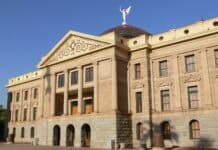We knew at the start of spring that this was going to be a rough fire season.
With less-than-normal snow over the winter, the lack of a good monsoon the last two years and dry weather all this year with rainfall under normal conditions, we were primed for a potentially devastating fire season, and we are getting one.
We have been exceedingly lucky the last several years that the bad seasons we could have had skipped us for the most part. Meanwhile, they hit southern Arizona, Oregon and California.
We’ve already had a major fire in the Cornville area, focusing the attention of Sedona, Cottonwood, Clarkdale and Camp Verde on the unincorporated community squarely in the middle of all four towns. The sight of slurry bombers flying low over Cornville and Page Springs and dumping fire retardant on the flames was terrifying for many.
The 1,240-acre Cornville Fire is contained, but areas continue to smolder as of press time.
Now there is another major wildfire burning down State Route 260 near the communities of Pine and Strawberry, forcing evacuations of the nearby residents. The Backbone Fire has burned 32,757 acres, making it larger than the 21,227-acre Slide Fire that ravaged Oak Creek Canyon in 2014. There are more than 250 firefighters working to contain that fire.
Another blaze, the Rafael Fire, is burning 24,064 acres north of Cottonwood and Clarkdale and approximately 4 miles north of Perkinsville, west as Sycamore Canyon.
There is also a group of fires, the Rock Butte Fires, burning to the west-northwest of Rafael, north of Chino Valley, and has burned just over 700 acres, but the smoke from both is affecting Sedona and the Verde Valley.
All but the Cornville Fire were caused by lightning from dry thunderstorms, meaning there’s little we humans can do to stop them from starting. Enabled to swiftly grow due to high winds, there’s not much we can do to stop them from growing until we get crews on scene.
However, we can prevent human-caused wildfires.
Northern Arizona is under Stage II wildfire restrictions. If you smoke while you drive, maybe don’t, but if you do, use the ashtray in your vehicle or buy a smokeless ashtray where you can deposit your butts. Do not under any circumstances flick them out the window and assume they will go out on their own. Take your car in for a tune-up so that engine problems aren’t throwing sparks into brush as you drive. Don’t use heavy machinery outdoors near any brush. Obviously, no campfires.
Exacerbating the fire risks are the extreme heat, which dries out the terrain and fire fuels like brush, grasses and high desert trees. What could be a moderate fire becomes a large one in these conditions.
The high heat also wreaks havoc on firefighters who are called in to battle these blazes, because they are fighting them in sometimes heavy gear. After standing in front of flames burning several hundred degrees, they look for relief in “cooler” temperatures, away from the fires only to find themselves with temperatures well over 100 degrees.
Hotshot crews come from all over and many are simply not used to our Arizona heat.
We again give these local firefighters and Hotshot wildland fighting teams our thanks for protecting our communities, properties and, in many cases, the lives of our neighbors.
We can’t really do much with the fire season as it is other than creating defensible space around our homes, helping our friends and neighbors evacuate, should the need arise, offering relief, donations and supplies to the fire crews near us and simply hoping monsoon storms arrive soon. If you must take refuge from the smoke, don’t hesitate to do so.
Please stay safe.
Christopher Fox Graham
Managing Editor



















